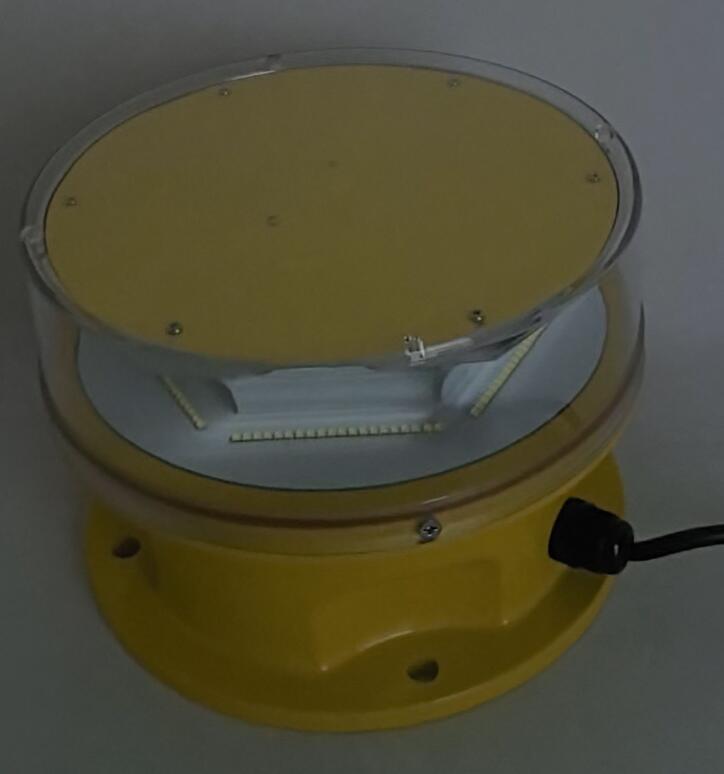Posted: 2025-08-04
In the vast network of aviation safety systems, obstruction light bulbs serve as the fundamental components that make tall structures visible to aircraft. These specialized light sources transform towers, buildings, and other elevated structures into beacons of safety, preventing collisions and ensuring compliance with international aviation regulations. This article explores the technology behind obstruction light bulbs, their various types, maintenance requirements, and the latest advancements in illumination technology.
The Essential Function of Obstruction Light Bulbs
Obstruction light bulbs are specifically designed to mark hazards to air navigation, performing several critical functions:
Visual Warning System: Alert pilots to the presence of tall structures

24/7 Operation: Provide continuous visibility in all weather conditions
Regulatory Compliance: Meet strict intensity and color requirements set by aviation authorities
Collision Prevention: Reduce accident risks during low-visibility operations
| obstruction light bulbs |
Without properly functioning obstruction light bulbs, even the most sophisticated lighting systems would fail to protect air traffic effectively.
Types of Obstruction Light Bulbs
The aviation industry utilizes several bulb technologies, each with distinct characteristics:
1. Incandescent Bulbs
Traditional technology with tungsten filaments
Gradually being phased out due to inefficiency
Still found in some legacy systems
| obstruction light bulb |
2. Halogen Bulbs
Improved version of incandescent technology
Brighter output and longer lifespan
Common in medium-intensity applications
3. Xenon Strobe Bulbs
High-intensity discharge technology
Used in powerful obstruction lighting systems
Ideal for tall structures and daytime visibility
4. LED Modules
The current industry standard
Exceptional energy efficiency and longevity
Instant on/off capability with no warm-up time
Resistant to vibration and extreme temperatures
Technical Specifications and Performance Factors
When selecting obstruction light bulbs, several technical parameters must be considered:
Luminous Intensity: Measured in candelas (cd), must meet ICAO/FAA requirements
Beam Angle: Determines visibility from different approach angles
Color Temperature: Red (620-660nm) or white strobe (depending on application)
Operating Temperature Range: Must function in extreme cold/heat
Vibration Resistance: Critical for wind-exposed installations
Lifespan: Ranges from 1,000 hours (incandescent) to 50,000+ hours (LED)
Maintenance and Replacement Best Practices
Proper care of obstruction light bulbs ensures continuous safety performance:
1. Scheduled Replacement
Follow manufacturer's recommended lifespan
Maintain replacement logs for regulatory compliance
Group replacements to minimize maintenance visits
2. Cleaning Procedures
Regular lens cleaning to maintain light output
Proper handling to avoid damaging bulb surfaces
Use of appropriate cleaning solutions
3. Performance Testing
Photometric measurements to verify intensity
Color wavelength verification
Functionality checks after severe weather events
4. Spare Parts Management
Maintain adequate inventory of replacement bulbs
Proper storage conditions to preserve bulb integrity
Rotation of stock to prevent aging of unused bulbs
The Transition to LED Technology
The aviation lighting industry is undergoing a significant shift toward LED-based obstruction light bulbs due to their numerous advantages:
Energy Efficiency: 80-90% less power consumption than traditional bulbs
Extended Lifespan: 5-10 times longer than conventional options
Durability: Resistant to shock, vibration, and temperature extremes
Instant Operation: No warm-up time required
Maintenance Reduction: Fewer replacements and service visits
This transition is creating safer, more reliable obstruction lighting systems while reducing operational costs.
Regulatory Compliance Considerations
All obstruction light bulbs must meet strict international standards:
ICAO Annex 14: Specifies light intensity and color requirements
FAA AC 150/5345-43H: Details performance standards in the U.S.
IEC 61820: International standards for aviation ground lighting
Local Aviation Authority Rules: Additional regional requirements
Regular audits and documentation of bulb performance are essential for maintaining compliance.
Emerging Technologies and Future Trends
The future of obstruction light bulbs includes several promising developments:
Smart Bulb Technology: Built-in diagnostics and performance monitoring
Advanced Materials: More durable and efficient light-emitting surfaces
Hybrid Systems: Combining different bulb technologies for optimal performance
Sustainable Designs: Reduced environmental impact in manufacturing
Adaptive Lighting: Automatic intensity adjustment based on conditions
Special Applications and Considerations
Different environments present unique challenges for obstruction light bulbs:
Offshore Installations: Require corrosion-resistant designs
High-Altitude Locations: Must withstand extreme cold and UV exposure
Urban Environments: Need to balance visibility with light pollution concerns
Temporary Structures: Require quick-install solutions with reliable performance
Obstruction light bulbs remain at the heart of aviation safety lighting systems, evolving from simple incandescent designs to sophisticated LED solutions. As the aviation industry continues to grow and structures become taller and more numerous, the importance of reliable, high-performance obstruction light bulbs will only increase. The ongoing technological advancements in this field promise to deliver even greater safety, efficiency, and reliability in the years to come.
By understanding the different types of bulbs available, their maintenance requirements, and the latest innovations, aviation professionals can ensure their obstruction lighting systems provide optimal protection for air traffic. The careful selection and proper care of these critical components will continue to play a vital role in maintaining safe skies worldwide.